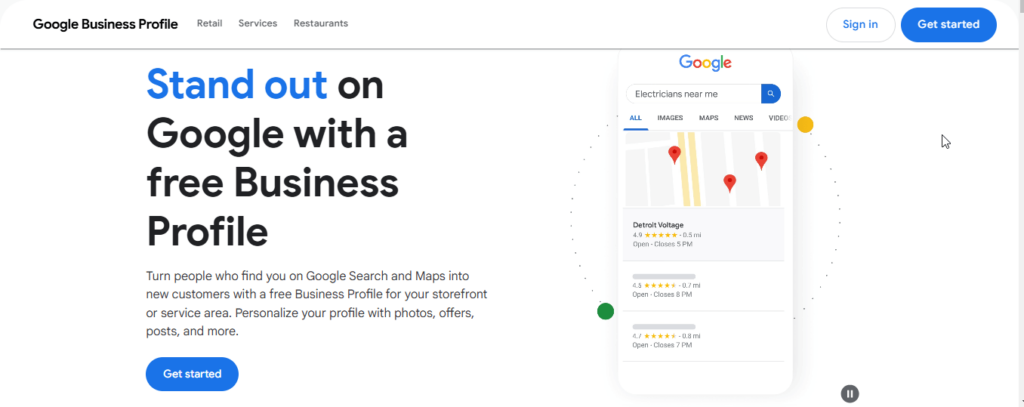Contents
- How Proper SEO Optimization Can Increase Traffic and User Engagement
- i. Higher search engine rankings and organic traffic
- ii. Improved user experience (UX)
- iii. Optimized content and relevance
- iv. Increased click-through rates (CTR)
- v. Local SEO and targeted traffic
- vi. Link building and social proof
- vii. Conversion rate optimization (CRO)
- ix. Analytics and continuous improvement
- Top WordPress Directory Website SEO Optimization Tips
- 1. Choose an SEO-friendly theme and plugin
- 2. Optimize for Local SEO
- 3. Create custom metadata for listings
- 4. Implement a comprehensive schema markup
- 5. Ensure mobile responsiveness
- 6. Optimize speed and performance
- 7. Encourage user-generated content
- 8. Use advanced search options
- 9. Implement internal linking
- 10. Leverage social signals
- 11. Monetize thoughtfully with SEO in mind
- 12. Track and analyze SEO performance
- Conclusion
WordPress Directory Website SEO Optimization Tips
Did you know that 75%[1] of people never go past the first page of Google?
If your WordPress directory website isn’t optimized for SEO, it’s probably not getting the traffic it deserves. That can be frustrating when you’ve worked hard to build a site full of valuable listings.
The good news is that improving your rankings doesn’t have to be complicated. By focusing on simple SEO strategies like organizing your content, using the right keywords, and optimizing custom fields, you can start attracting more visitors and climbing search results.
In this guide, we’ll break down easy tips to help your directory website stand out, get more traffic, and bring in more business. Let’s get started.
How Proper SEO Optimization Can Increase Traffic and User Engagement
Proper SEO optimization plays a crucial role in increasing website traffic and enhancing user engagement. By aligning your website with the right SEO strategies, you can ensure that it not only attracts more visitors but also keeps them engaged.
Here’s how SEO contributes to both traffic growth and improved user interaction.
i. Higher search engine rankings and organic traffic
The most immediate benefit of SEO optimization is better visibility in search engine results pages (SERPs). Websites that rank higher are far more likely to receive traffic, especially those in the top three positions.
According to a study by Backlinko, the first result on Google gets an average click-through rate (CTR) of 31.7%, and the second result receives 24.7%. In contrast, pages that rank on the second page of results get very little traffic, with only about 0.78% of clicks.
SEO helps achieve higher rankings by focusing on both on-page and off-page factors, such as keyword optimization, high-quality backlinks, and user intent alignment.
For example, if your business is a local bakery, optimizing for local search queries such as “best bakery near me” or “fresh bread in New York” will help you attract customers specifically searching for your services in your region. This means your website will not only rank higher but will do so for the most relevant and targeted queries.
ii. Improved user experience (UX)
User experience is an integral part of SEO. A website that is difficult to navigate, slow to load, or not mobile-friendly can lead to high bounce rates and low engagement. In fact, studies have shown that a delay of just one second in page load time can result in a 7% reduction in conversions.
Google’s ranking algorithms take these factors into account when determining search rankings, meaning that optimizing your site for speed and mobile usability can directly impact both your rankings and user retention.
For instance, a study by HubSpot found that 61% of users are unlikely to return to a mobile site that they had trouble accessing. This highlights the importance of having a responsive website design that adjusts seamlessly to different screen sizes.
Similarly, tools like Google PageSpeed Insights can help identify issues that may slow down your website, allowing you to improve load times and thereby enhance both SEO performance and user engagement.
iii. Optimized content and relevance
Effective SEO requires creating high-quality, valuable content that directly answers the queries of your target audience. Content that resonates with users not only attracts traffic but also boosts engagement. For example, when you create blog posts, product pages, or informational resources that focus on the keywords and topics your audience cares about, you’re more likely to engage them and encourage them to spend more time on your site.
A report from Content Marketing Institute reveals that 70% of consumers prefer to learn about a company through articles rather than ads. When you craft content around these insights and optimize it for relevant keywords, you’re not only making your content more discoverable but also ensuring that it’s meaningful to users.
For example, a blog post titled “10 Tips for Baking the Perfect Sourdough” would attract readers who are specifically interested in baking, increasing both traffic and engagement on your site.
iv. Increased click-through rates (CTR)
The way your website appears in search results has a significant impact on CTR. SEO helps improve your meta tags—specifically, title tags and meta descriptions—which can influence whether users decide to click on your link. For instance, an attractive and informative title tag can persuade users to click over a competitor’s link.
For example, a meta description like “Looking for the best sourdough bread in Florida? Discover our bakery’s fresh, artisan sourdough made daily!” would likely outperform a generic description like “Sourdough bread at our bakery.”
According to a study by HubSpot, adding numbers to your headlines can increase CTR by 36%. Using action-oriented language and incorporating relevant keywords can further encourage clicks.
Additionally, rich snippets—enhanced search results that include elements like reviews, ratings, and images—can also improve CTR. For example, if your bakery’s page appears with a 5-star rating and a photo of your best-selling loaf, users are more likely to click than if it appeared as a simple text listing.
v. Local SEO and targeted traffic
Local SEO optimization helps businesses attract customers in their geographic area. A study by BrightLocal found that 78% of mobile local searches result in an offline purchase. If you run a local business, targeting specific geographic keywords is essential. For example, a bakery in New York City should aim to rank for search terms like “best bakery in NYC” or “artisan bread in Manhattan.”
One key aspect of local SEO is claiming and optimizing your Google My Business (GMB) listing. This free tool enables businesses to appear on Google Maps and in local search results, which can increase visibility significantly.

A bakery that consistently updates its GMB listing with hours, location, and customer reviews can attract more local customers and build engagement. Positive reviews also act as a form of social proof, which can boost user trust and influence purchasing decisions.
Backlinks—links from other websites to yours—are one of the most important factors in SEO. Google sees these links as “votes of confidence” in the quality of your content. The more high-quality backlinks your website has, the more authoritative it appears, which can improve your rankings and bring more traffic.
For example, a local bakery might collaborate with food bloggers or local influencers who can write about the bakery and include a link to its website. These backlinks, when from reputable sources, not only improve SEO but also bring in referral traffic, further increasing user engagement.
Additionally, social media shares can amplify your reach, driving more traffic and encouraging users to interact with your content.
vii. Conversion rate optimization (CRO)
While SEO focuses on driving traffic, conversion rate optimization (CRO) ensures that the visitors you attract take desired actions. Effective SEO leads users to optimized landing pages designed to convert them, whether that’s making a purchase, signing up for a newsletter, or downloading a guide.
By analyzing user behavior and adjusting calls-to-action (CTAs) based on data, you can improve your conversion rates. A well-designed landing page can make a significant difference in converting visitors into customers.
For example, a landing page for a bakery offering a discount on first-time orders, combined with clear navigation and an easy checkout process, is more likely to convert users into paying customers.
ix. Analytics and continuous improvement
SEO is an ongoing process, and regular analysis is essential for success. By using tools like Google Analytics, you can track key metrics such as page views, bounce rates, and average time spent on the site. These insights allow you to identify what works well and what doesn’t, enabling you to continually refine your SEO strategies.
For example, if you notice that certain blog posts are generating significant traffic but users quickly leave the page, it might indicate a need for better internal linking or enhanced content. Continuous improvement based on real-time data is crucial for maintaining and increasing both traffic and engagement over time.
Top WordPress Directory Website SEO Optimization Tips
Building a directory website on WordPress is a promising venture, but ensuring its visibility to your target audience requires effective SEO strategies. Here are essential tips for optimizing your WordPress directory website for search engines:
1. Choose an SEO-friendly theme and plugin
Start by selecting a theme that prioritizes SEO, like OneListing Pro or dClassified. These themes are built with clean, optimized code. Pair them with a robust directory plugin like Directorist, which includes built-in SEO features to boost your site’s visibility.
2. Optimize for Local SEO
Directory websites often serve local audiences. Leverage local SEO tactics by:
- Including location-based keywords in titles, meta descriptions, and content.
- Using Google Maps or Open Street Maps integration for listings.
- Encouraging listings to add accurate NAP (Name, Address, Phone) details.
3. Create custom metadata for listings
Use plugins like Yoast SEO to edit metadata for individual listings. Write compelling and keyword-rich titles and descriptions to improve click-through rates from search engine results.
4. Implement a comprehensive schema markup
Schema markup helps search engines understand your site’s structure. Directory plugins like Directorist often support schema for listings, which improves visibility in rich results, including business hours, ratings, and pricing.
5. Ensure mobile responsiveness
With most users accessing directories on mobile devices, responsive design is critical. Use themes that are 100% mobile-responsive, ensuring seamless navigation and fast loading on smaller screens.
6. Optimize speed and performance
Page speed is a ranking factor. Optimize your directory website by:
- Using a lightweight theme and plugin.
- Compressing images with tools like Smush or TinyPNG.
- Enabling caching via plugins like WP Rocket or W3 Total Cache.
7. Encourage user-generated content
Allow users to submit reviews, ratings, and comments. This not only keeps the content fresh but also improves engagement metrics, signaling relevance to search engines.
8. Use advanced search options
Enable advanced search filters to improve user experience. A well-optimized search function with AJAX-powered instant results enhances navigation and increases time-on-site metrics.
9. Implement internal linking
Interlink categories, locations, and related listings to improve crawlability and user experience. Use breadcrumbs for easy navigation and SEO benefits.
Enable social sharing buttons on listings to boost visibility. Social signals, while indirect, can enhance your site’s authority and traffic, contributing to improved rankings.
11. Monetize thoughtfully with SEO in mind
If you’re running ads, ensure they don’t overshadow content or slow down your site. Balance monetization features like pay-per-click ads, featured listings, and subscription plans with user experience.
12. Track and analyze SEO performance
Use tools like Google Analytics, Search Console, and third-party solutions like Ahrefs or SEMrush to monitor performance. Identify high-performing pages and listings, and replicate their strategies across other areas of your site.
Conclusion
To wrap it up, SEO optimization for your WordPress directory website is key to making sure your site stands out and attracts more visitors. By focusing on things like good content, fast loading times, mobile-friendliness, and smart keyword use, you can improve your search rankings and create a better experience for users.
SEO isn’t a one-time task—it’s something you’ll need to keep working on. But by staying on top of the latest trends and making small, ongoing improvements, you’ll build a site that not only ranks well on search engines but also keeps people coming back. Keep tweaking and optimizing, and soon enough, your directory website will be working hard to help you reach your goals!
[1. ^ https://www.sierrasixmedia.co.uk/latest/the-importance-of-seo/]



Leave a Reply
You must be logged in to post a comment.